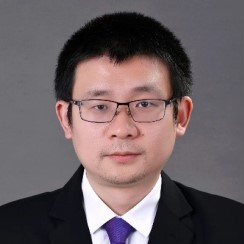New Materials and Concepts for Additive Manufacturing with Metals II
A special issue of Crystals (ISSN 2073-4352). This special issue belongs to the section "Crystalline Metals and Alloys".
Deadline for manuscript submissions: closed (11 January 2024) | Viewed by 1101
Special Issue Editors
Interests: additive manufacturing; alloy design; microstructure; mechanical properties; biomedical applications; soft-magnetic materials
Special Issues, Collections and Topics in MDPI journals
Interests: laser additive manufacturing; selective laser melting; laser powder bed fusion and directed energy deposition; microstructure and characterization; mechanical properties
Special Issue Information
Dear Colleagues,
As is well-known, laser powder bed-based additive manufacturing techniques for processing metals are almost established techniques for producing highly complex components and parts. The almost unrestricted freedom of geometry, for example, enables the integration of cooling channels close to the contour to minimize local hot spots so that the processing time can be shortened and the component distortion of the semi-finished product can be minimized. In addition to the high design flexibility, components can be generated close to the contour due to the layer-by-layer material application, i.e., work- and energy-intensive post-machining is often not required.
Nevertheless, the limited material spectrum and low process speeds have impeded the breakthrough of additively manufactured components on a large scale to date. For this reason, new materials are increasingly being developed explicitly for the AM process employing computer-based materials design.
The present Special Issue, entitled, “New Materials and Concepts for Additive Manufacturing with Metals II”, aims to summarize the progress achieved in the last five years, as well as highlight recent research.
Dr. Kay-Peter Hoyer
Dr. Nan Kang
Guest Editors
Manuscript Submission Information
Manuscripts should be submitted online at www.mdpi.com by registering and logging in to this website. Once you are registered, click here to go to the submission form. Manuscripts can be submitted until the deadline. All submissions that pass pre-check are peer-reviewed. Accepted papers will be published continuously in the journal (as soon as accepted) and will be listed together on the special issue website. Research articles, review articles as well as short communications are invited. For planned papers, a title and short abstract (about 100 words) can be sent to the Editorial Office for announcement on this website.
Submitted manuscripts should not have been published previously, nor be under consideration for publication elsewhere (except conference proceedings papers). All manuscripts are thoroughly refereed through a single-blind peer-review process. A guide for authors and other relevant information for submission of manuscripts is available on the Instructions for Authors page. Crystals is an international peer-reviewed open access monthly journal published by MDPI.
Please visit the Instructions for Authors page before submitting a manuscript. The Article Processing Charge (APC) for publication in this open access journal is 2600 CHF (Swiss Francs). Submitted papers should be well formatted and use good English. Authors may use MDPI's English editing service prior to publication or during author revisions.
Keywords
- additive manufacturing
- alloy design
- coating
- fatigue performance
- functionally graded materials
- functional integration
- laser powder bed fusion
- mechanical properties
- microstructure
- new materials for AM
- phase transformation
- powder analysis
- post-processing
- X-ray diffraction






